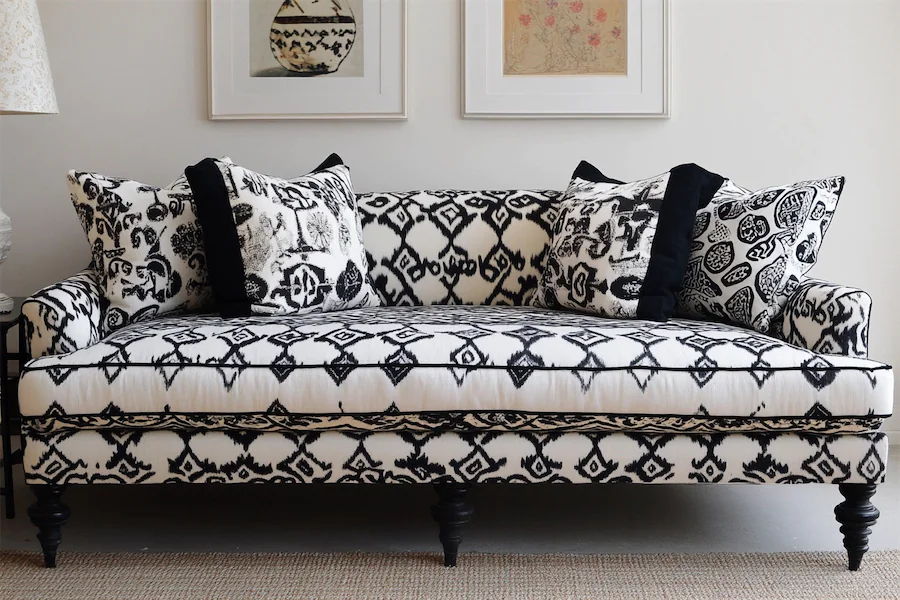Patterned sofas have long been a staple in interior design, offering both functionality and aesthetic appeal. This article delves into their history, key features, applications, considerations for selection, and concludes with their enduring relevance in modern interiors.
Introduction to Patterned Sofas
A patterned sofa features upholstery adorned with designs such as florals, geometrics, stripes, or abstract motifs. Beyond providing seating, these sofas serve as focal points, introducing color, texture, and personality into a space.
History and Origins of Patterned Sofas
The evolution of patterned sofas mirrors broader trends in furniture design and textile production:
- 17th Century: The Knole Settee, originating around 1640, is an early example of a sofa with decorative upholstery. Initially serving as a formal seat for aristocrats, its design has influenced many modern sofas.
- 18th Century: Thomas Chippendale’s designs incorporated intricate patterns, reflecting the era’s emphasis on detailed craftsmanship.
- 1920s: The Art Deco movement introduced bold geometric patterns and luxurious materials, influencing sofa designs with vibrant and opulent fabrics.
- 1960s-1970s: A surge in bold, vibrant patterns mirrored the cultural shifts of the time, with designs embracing bright colors and in-your-face patterns.
Key Features of Patterned Sofas
Patterned sofas are distinguished by several characteristics:
- Diverse Patterns: From florals and stripes to abstract designs, the variety caters to different aesthetic preferences.
- Color Schemes: Patterns can range from monochromatic tones to vibrant multicolor designs, influencing the room’s ambiance.
- Fabric Choices: Common materials include cotton, linen, velvet, and synthetic blends, each affecting the sofa’s texture and durability.
- Design Styles: Patterned sofas complement various interior styles, from traditional to contemporary, depending on the pattern and color scheme.
Applications of Patterned Sofas
In interior design, patterned sofas serve multiple purposes:
- Focal Point: A boldly patterned sofa can anchor a room, drawing attention and setting the design tone.
- Style Enhancement: They can introduce or reinforce a room’s theme, such as adding a retro vibe with vintage patterns.
- Space Definition: In open-concept areas, a patterned sofa can delineate different functional zones.
- Personal Expression: Patterns allow homeowners to showcase their personality and design preferences.
Considerations When Choosing a Patterned Sofa
Selecting the appropriate patterned sofa involves several factors:
- Room Size: Large patterns can overwhelm small spaces, while intricate designs may get lost in expansive areas.
- Existing Decor: Ensure the sofa’s pattern complements or contrasts harmoniously with current furnishings and color schemes.
- Pattern Scale: Mixing patterns of different scales can create visual interest without overwhelming the space.
- Longevity: Consider whether the pattern aligns with long-term style preferences to avoid premature replacement.
- Maintenance: Some patterned fabrics may require specific cleaning methods; choose one that fits your lifestyle.
Conclusion
Patterned sofas have traversed centuries, adapting to and reflecting changing design aesthetics. Their ability to infuse character, define spaces, and serve as functional art pieces ensures their continued prominence in interior design. When chosen thoughtfully, a patterned sofa can elevate a room, offering both comfort and style.
